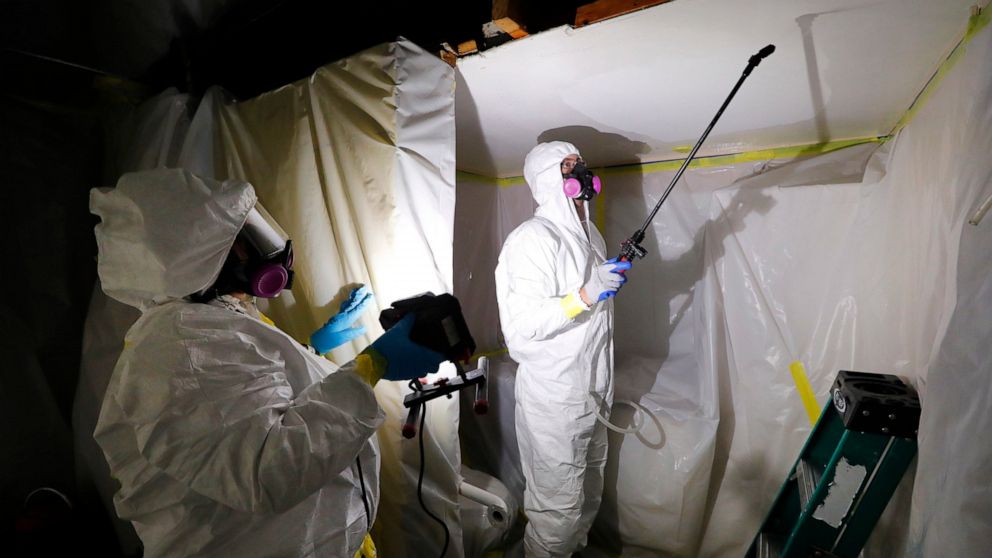The Environmental Protection Agency has proposed a rule to finally ban asbestos, a carcinogen still used in some chlorine bleach, brake pads and other products that kills thousands of Americans every year
WASHINGTON — The Environmental Protection Agency on Tuesday proposed a rule to finally ban asbestos, a carcinogen that is still used in some chlorine bleach, brake pads and other products and kills thousands of Americans every year.
The proposal marks a major expansion of EPA regulation under a landmark 2016 law that overhauled rules governing tens of thousands of toxic chemicals in everyday products, from household cleaners to clothing and furniture.
The proposed rule would ban chrysotile asbestos, the only ongoing use of asbestos in the United States. The substance is found in products such brake linings and gaskets, and is used to manufacture chlorine bleach and sodium hydroxide, also known as caustic soda.
EPA Administrator Michael Regan called the rule an important step to protect public health and “finally put an end to the use of dangerous asbestos in the United States.”
The proposed ban “demonstrates significant progress in our work to implement the (2016) law and take bold, long-overdue actions to protect those most vulnerable among us,” Regan said.
The 2016 law authorized new rules for tens of thousands of toxic chemicals found in everyday products, including substances such as asbestos and trichloroethylene that for decades have been known to cause cancer yet were largely unregulated under federal law. Known as Frank Lautenberg Chemical Safety Act, the law was intended to clear up a hodgepodge of state rules governing chemicals and update the Toxic Substances Control Act, a 1976 law that had remained unchanged for 40 years.
The EPA banned asbestos in 1989, but the rule was largely overturned by a 1991 court decision that weakened EPA’s authority under TSCA to address risks to human health from asbestos or other existing chemicals. The 2016 law required the EPA evaluate chemicals and put in place protections against unreasonable risks.
At the signing ceremony for the new law, then-President Barack Obama said the U.S. chemical system under TSCA was “so complex, so burdensome that our country hasn’t even been able to uphold a ban on asbestos. I think a lot of Americans would be shocked by all that.”
Asbestos, which was once common in home insulation and other products, is banned in more than 50 countries and its use in the U.S. has been declining for decades. The only form of asbestos known to be currently imported, processed or distributed for use in the U.S. is chrysotile asbestos, which is imported from Brazil and used by the chlor-alkali industry, which produces bleach, caustic soda and other products.
Most consumer products that historically contained chrysotile asbestos have been discontinued.
While chlorine is a commonly used disinfectant in water treatment, there are only 10 chlor-alkali plants in the U.S. that still use asbestos diaphragms to produce chlorine and sodium hydroxide. The plants are mostly located in Louisiana and Texas.
The use of asbestos diaphragms has been declining and now accounts for about one-third of the chlor-alkali production in the U.S., EPA said.
The proposed ban would take effect two years after the effective date of the final rule.
In addition to addressing the significant human health effects of chrysotile asbestos exposure, the proposed rule is also expected to reduce air pollution and greenhouse gas emissions associated with chlor-alkali production, an energy-intensive industrial operation.

